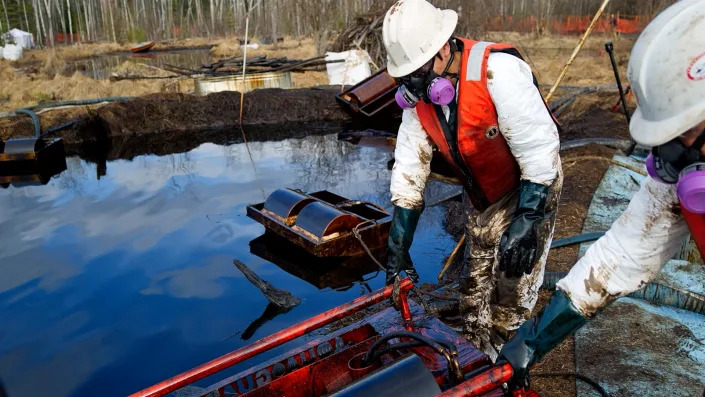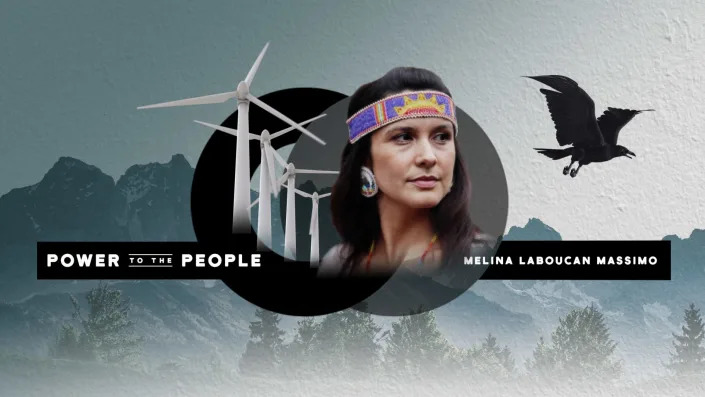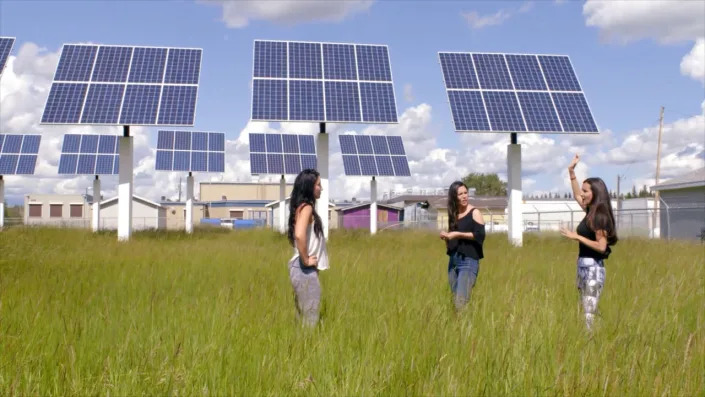Power to the People: A path forward out of the climate crisis
A post-carbon future is possible through self-determination.
That’s the central message emanating from the documentary series entitled Power to the People that follows activist Melina Laboucan-Massimo across Canada as she visits Indigenous communities revolutionizing the clean energy transition in response to the climate crisis.
That rationale for optimism is because these solutions already exist, according to Laboucan-Massimo, who hosts the 13-part episodic series that depicts how Indigenous communities are using renewable energy initiatives involving wind, solar, tidal, biomass, and geothermal to generate their own independent power.
From her traditional homelands in Little Buffalo, AB, Laboucan-Massimo knows too well the consequences of fossil fuel extraction, as Episode 1 examines through a first-hand account of an oil spill.
“The community wasn’t even told of the immensity of this spill until five days after … so I set out to find a helicopter to at least fly over so we could take pictures from the air. We wrote up a press release and every major media outlet in Canada came because it was one of the biggest oil spills in Canada’s history.”

28,000 barrels of crude oil — 4.5 million litres – stained the land and rivers close to Laboucan-Massimo’s community near Little Buffalo, AB. (Image provided by Power to the People)
But, Laboucan-Massimo and the series don’t linger on the past for long. There’s too many success stories to focus on instead. Net-zero housing, run-of-river hydroelectric projects, and green transportation initiatives are uncovered in Power to the People, among other solution stories that set the course towards energy autonomy — all being shaped by Indigenous values, cultures, and communities.
“We need to be the leaders in our own projects” Laboucan-Massimo says in Episode 2. What she means is that at the crux of the climate crisis is the need to paint a picture of the path forward.
Power to the People does just that.

New Episodes Weekly from June 17-July 22
Read a summary of the upcoming episodes below and check back weekly to see updated links for new chapters of the Power to the People documentary series.
June 17 Episode 1: Little Buffalo Growing up in the Lubicon Lake Band in Little Buffalo, AB, Melina Laboucan-Massimo has experienced the detrimental effects of oil sands extraction. Today, it has made her one of Canada’s leading climate change campaigners and the host of Power to the People.
June 24 Episode 2: Gull Bay For some remote Indigenous communities north of Thunder Bay, connecting to the Ontario hydro grid will never be a reality. Gull Bay First Nation found the means to create their own ‘micro grid’ using solar energy to offset their use of diesel power.
July 1 Episode 3: Atlin There are roughly 300 off grid Indigenous communities across Canada, who continue to rely on diesel-generated power. The Taku River Tlingit Nation in northern BC is one of the few First Nations who have successfully replaced diesel power through their implementation of clean, renewable energy.
July 8 Episode 4: Six Nations Home to the largest First Nations population in Canada, Six Nations of the Grand River established a corporation to manage economic opportunities on behalf of their people. That effort now sees Six Nations invested in some of the largest wind and solar power plants in the nation.
July 15 Episode 5: Haida Gwaii Surrounded by the Pacific Ocean and off the BC hydro grid, the Haida Nation relies on diesel generators to power their communities. Now, a homegrown group is looking to the wind, sun, and sea to offset their reliance on fossil fuels.
July 22 Episode 6: Tofino Geothermal energy is generated by heat stored below the earth’s surface. The Tla-o-qui-aht Nation is harnessing this renewable energy through a geoexchange system to cost effectively heat and cool their homes and buildings.
To learn more about the Power to the People documentary visit powertothepeople.tv

No comments:
Post a Comment